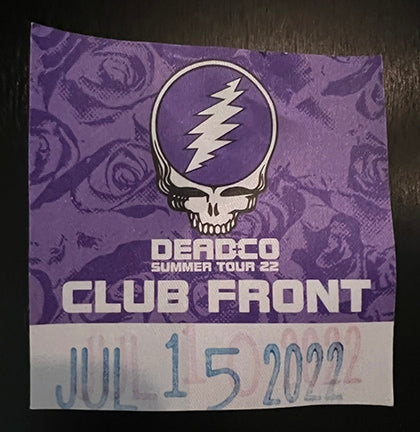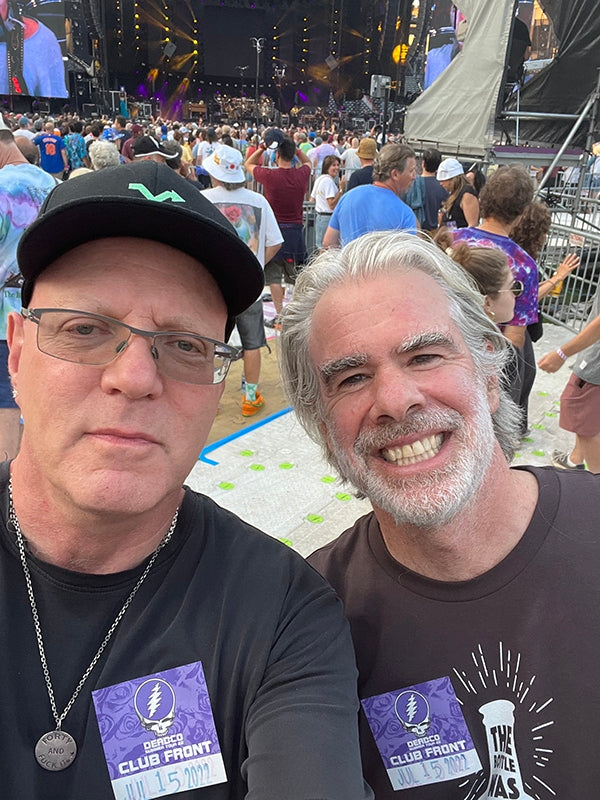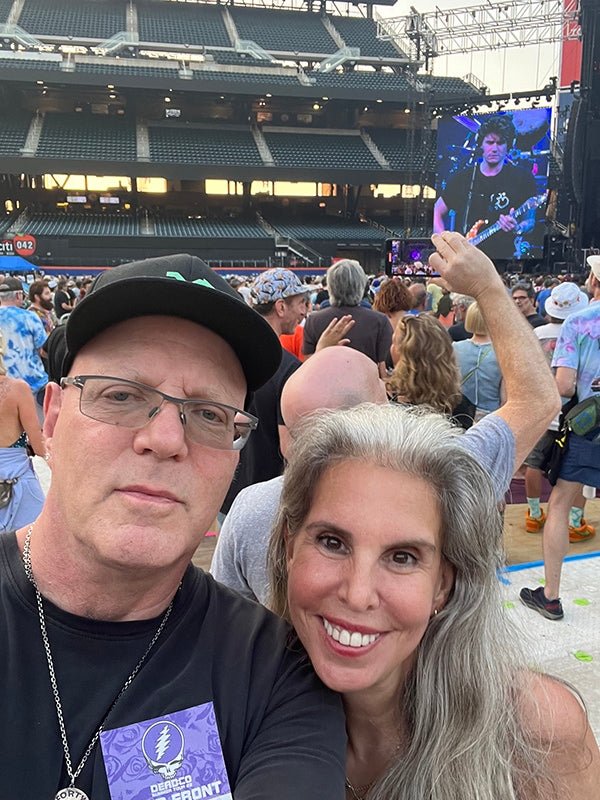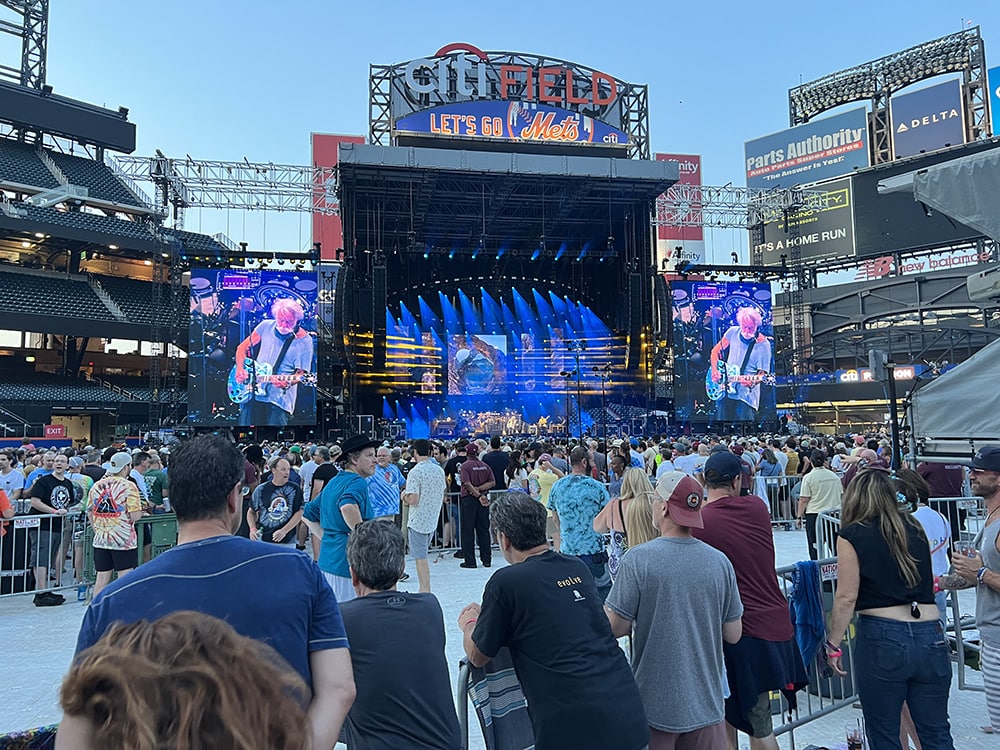Very few artists command followings so rabid that, when anyone criticizes them, the band’s defenders come out in force.
I have written critically about the Stones, Springsteen, Dylan, and the Dead in the past.
I never cared for Bruce’s music. His voice drives me crazy and I walked out twice – at two different shows – while watching him with the E Street Band, as the show sound was awful and his stage raps were just plain boring, so that was easy. The Rolling Stones, the Grateful Dead, and Bob Dylan were tougher in that I have loved these artists at different times and my issues with them, over time, have to do with what I believe is an artist’s responsibility to their fans.
In the case of the Stones, who were once one of the greatest live shows on earth, they are just plain pathetic now. The Stones now have a better rhythm section than they have had in years, with great replacements for Charlie Watts and Bill Wyman (Darryl Jones on bass and Steve Jordan on drums) and if Mick could do it, he should just finally put Keith and Woody out to pasture and bring in guys who can actually play guitar. This of course would make them a “cover band” but really, the guitar playing is so lousy, why would anyone want to hear some of the greatest rock songs played in keys that were not meant to be played in because arthritis prevents the correct playing of the songs. Keith was one of my favorite guitar players but he just can’t do it. Woody? Never even a competent player but a great bass player when he was with Jeff Beck. He should have stuck with that instrument.
Dylan…well, Bob’s music is beyond reproach but his live performance skills at this point in his career prove conclusively that he just doesn’t care about how he performs, and it shows with the disdain he has for his fans. His band is very good but the song arrangements are pure garbage. Oh sure, you may love Dylan’s freedom of artistic interpretation wrapped in the guise of a genius artist who refuses to compromise his constant search for new musical reinvention.
I say BS!
This is simple narcissistic pseudo-intellectual crap designed to torture your following and to prove that there is a sucker born every minute. The joker laughs at you and it is just plain sad.
And now to the subject at hand, the Grateful Dead, or I should say, Dead & Company.
This is a tough one, as I have seen the original Grateful Dead more times than any other band (except my own!).
27 times between 1969 and 1972 actually. On acid 26 of those times.
I totally got the debut album simply called The Grateful Dead (1967), followed by Anthem of the Sun, Aoxomoxoa and Live/Dead.
Who didn’t love Workingman’s Dead or American Beauty?
Here is the weird thing though. It wasn’t their singing (barely passable until Workingman’s Dead) or the guitar work (Bob Weir was straight rhythm, although with a distinctive style and Jerry Garcia…well, I never liked his guitar tone, and his lead work, while interesting, was way too repetitive for me). What got me hooked on the band was the interesting (but enigmatic) songwriting style of Robert Hunter, the polyrhythmic double drumming of Mickey Hart and Bill Kreutzmann, and Phil Lesh’s bass playing. During the jams that connected the songs, this incredible rhythm section just blew me away and, on acid, was truly mesmerizing
The Dead may have thought of themselves as a blues-based band but in the strictest sense, they were not that. The Allman Bros Band truly was, and then they could meander and jam, but the guitars were heavy and muscular because Duane Allman and Dickey Betts played Les Paul guitars and Marshall amplifiers. This is heavy artillery.
Jerry’s guitar tone was always thin and mealy so it never got me. He played through Fender amps all during the time I saw them. These amps were super-clean and not to my liking. Jerry played through Gibson SGs and then switched to Alembic guitars. I never liked the sound of Alembics and he got the same weak sound out of his SG.
This is a totally personal view and I get that Deadheads could scream, but I don’t care. I call it as I see it.
The last time I saw the Dead was in October 1972, two months before I started Twisted Sister.
I always loved and admired the communal reach and the near-religious fervor of the Deadheads. This was something that I brought to Twisted Sister and some of the best reviews we ever got mentioned that our shows were like religious experiences. This was a direct result of my seeing the Dead!
So, with this as a background, I walked onto Citi Field to see them for the first time in 50 years.
A lot had changed.
I was just a music fan in 1972. Now I have sold millions of records, my music is the most licensed music for TV, movies and commercials from the 1980s era, and I have played to millions of fans in 40 countries.
Citi Field sold around 40,000 for this Dead & Company show. On the last run of shows on our Twisted Sister farewell tour, we played some venues that held anywhere from 40,000 to 110,000 fans. I’m telling you this because all of this flooded into my brain as I walked to the VIP section located near the sound board.
Hint: want to hear an artist in the best way possible? Always go to the sound board as that is by far where you’ll hear the best mix.

Because Twisted had played over 125 monster shows from our reunion in 2003 until our final show in November 2016, Citi Field actually looked small, which was really a crazy feeling.
I walked out of my last Dead show (before this one) in 1972 because I was not high and it seemed totally boring.
I was into Bowie and Lou Reed at that point and turned my back on everything that the Dead meant to me.
Roosevelt Stadium in Jersey City in 1972 appeared huge and scary, though.
I came to this show because, as irony would have it, the Grateful Dead and Twisted Sister are distributed by the same record label, Rhino Entertainment, and the president of Rhino, knowing my history with the Dead, invited me to the show. He also is a super Deadhead and produced the Grateful Dead documentary Long Strange Trip with Justin Kreutzmann, Bill Kreutzmann’s son. I have become friends with Justin Kreutzmann ever since our documentary (We Are Twisted F***ing Sister!) came out. Justin saw it and e-mailed me to tell me how much he liked it.

Jay Jay French and Rhino Entertainment president Mark Pinkus.
Life certainly is strange, as Justin and I texted each other before the concert, because it was doubtful that his dad, Bill, was going to play the show due to health reasons. But Justin had texted me that his dad was feeling really good and intended to play. He did…the whole show!
Let me just say a word about aging bands and the cost of touring. When you tour on a stadium scale, the costs are so high that you can’t afford to cancel a show, so many “classic” bands (with members age 60 and over) carry extra personnel in case someone gets sick. The Dead do that as well, except for occurrences like the concert at the Saratoga Performing Arts Center that was canceled in July when John Mayer’s dad suffered a heart attack and John rushed to the hospital three hours before show time.
In the case of the Grateful Dead/Dead & Company, the only original members at this point are Bob Weir, Bill Kreutzmann and Mickey Hart. Phil Lesh is still alive and touring with his own band but does not play with the others. The keyboardist, Jeff Chimenti, bassist/vocalist/percussionist Oteil Burbridge, percussionist Jay Lane, and lead guitarist/vocalist John Mayer are all “sidemen.”
As long as fans are OK with this, the bands will continue.
It doesn’t seem to have affected the Dead & Co.’s ability to sell tickets.
Well, what about the music, Jay Jay?
Here’s where it gets weird for me.
I went to the show so I could find out if the magic that the band possessed could still find its way into my heart and soul after all these years.
The Rolling Stones, for example, never recovered the golden years they had with Brian Jones and Mick Taylor on guitar. Not even close, and they get worse as every year goes by.
I have seen them several times since Taylor left, hoping things would right themselves, but sadly their live shows just continued to deteriorate for me.
When they toured from 1969 to 1972 with Mick Taylor, they were truly a majestic rock and roll band. Totally transcendent. Once Taylor left, they lost that mojo and now I would rather see a good Stones cover band any day.
I have gone to many shows over the last 50 years but there was never so large a time gap than I had with seeing the Grateful Dead.
50 years later is a very long time and I kept a totally open mind.
My verdict:
What I can say is that they did their best to create that magic, and hit it at certain points in the show. The sound was immaculate, and the drumming was actually very good.
As most of you know, John Mayer (a curious but ultimately successful choice) is now the replacement for Jerry Garcia.
Many greats have held down that exalted position (Warren Haynes and Trey Anastasio for example) and just because I’m not a Jerry fan doesn’t mean that I don’t get what Jerry brought to this band.
Committed Deadheads at the show confided to me that neither Warren or Trey were the right choices. I was told that Warren made them sound like the Allman Brothers and Trey made them sound like Phish. I was shocked, as these are both great players, but I get it. Imitating another player is a tough act.
When Twisted Sister’s drummer A.J. Pero died in 2015, his replacement, Mike Portnoy – among the most famous drummers in the world – told me that he would play exactly like A.J. and not bring his own personality into it. He didn’t, and was a true professional as he copied A.J.’s style totally.
Getting that Jerry Garcia tone down exactly must have been difficult, especially for John, as he is a much heavier (read “blues”) player. What John did amazingly well was channel Jerry in both guitar style (playing the scales and motifs that Jerry used) and guitar tone. John captured that clean, mealy tone that is the hallmark of Jerry’s unique style, the tone I remembered so well, and that is so revered. A tone that led the Dead, and even though I wasn’t a fan of it, don’t think I’m not aware of its importance to the band’s sound.
Dead & Company opened with “Bertha,” which I saw them open with many times back in the day, and it sounded pretty good. It didn’t roar though, and this was the issue with the whole show. These guys ain’t in their 20s any longer. They can play but the train moves slower. The set then meandered into “Mississippi Half-Step Uptown Toodeloo” and then went into a surprisingly strong “Shakedown Street.”

Jay Jay and Sharon French enjoying the scene.
John then took over on vocals for “Sugaree,” then Bob went into “Tennessee Jed,” then “Bird Song,” and closed out the first half with “Don’t Ease Me In.”
It ended the first set on a high note and I was pretty impressed that Bill Kreutzmann was so good. I was sending Justin screenshots of his dad the whole time and I felt really good about liking the whole experience.
It was the bass playing, however, that failed the most. Phil Lesh is a “lead guitar bass player” (like John Entwistle and Jack Bruce). I really missed the Phil Lesh style of loping bass runs that ran around the drumming. As good as Oteil Burbridge is, it had none of the Lesh fire and I really missed that.
The band took a 45-minute break. During this time, I hung out with basketball great and Dead superfan Bill Walton, as well as members of the record label and other Dead super regulars. I “got” it, and I could have been one also, had I not become a music pro and stayed on the “civilian side” of the Deadheads.
The weather that night was perfect.
As it was, I just sat and listened to the comments about the show (and comparisons to many others) from people in the audience. My Dead cred laid solely on the fact that I had seen Pigpen with the band 27 times and that Jerry Garcia gave me a tab of acid at one of the Fillmore East shows. The fact that I saw the Dead as an opening band also stunned some of the longtime fans.
I was older than almost all of them and could have told stories, but I just chose to absorb all that the night could give me.
When the band returned for the second set (with Bill still on drums, shockingly, as rumor had it that he could only get through the first half), I decided to sit down and just listen with my eyes closed to see how it felt and really sounded.
There were times that I almost got there. I really wanted them to “get there.” Because I now understand (I just turned 70 and my last show was in 2016) how aging gets in the way.
When they went into “Viola Lee Blues,” it was so slow as to be unrecognizable to me, but the jams went on through some of Terrapin Station and then went into “The Other One.”
Weir never had a strong voice and now he can barely hit any of the notes he used to, but I found myself rooting for him hard as he tried. They finally got into “I Know you Rider,” which was fun but went on way too long. It was at this point that Mickey Hart let his drum experimentation run wild for a nearly 20-minute percussion jam. Long enough for many to take a bathroom break. Self-indulgent? Yes, for me I couldn’t wait for it to end, but the weather was spectacular and I was standing near second base at Citi Field and damn well enjoying the whole of the experience.
Finally, we got to “Standing on the Moon” and “Not Fade Away.” The pace was now much slower and deliberate and totally devoid of that old energy.
John Mayer wore big headphones during the entire show. I was told that he has the “crowd mix” fed into his ears by the monitor mixer so he can hear what the crowd is hearing. This is a very studied approach, as he looks like a studio musician playing to a track. I suppose that he is so sensitive about what his role is that he wants to get it exactly right all the time. Because of that, he doesn’t prance around like a rock star. It was weird to watch it but I respected his approach.
The show ended with “Sugar Magnolia,” after which Mickey walked over to Bill and hugged him and the crowd roared. It was a relief to see Bill make it through the whole show.
They all walked off the stage but said nothing. No thank you or good byes.
They played nothing from Workingman’s Dead or American Beauty.
They did not play “Touch of Grey.” They didn’t play “Turn On Your Love Light” or “Good Lovin’.”
They didn’t play “St. Stephen.”
It was 11:30. The show started at 7:40.
And now, I can say that I saw them.
As the original members are all in their 70s, I can say that they did their best, gave their all, and the crowd seemed to relish the “Dead” experience.
Hard to say how many old timers were there because the age mix was truly diverse. I saw many Millennials, not just gray hairs.

Where else would a grateful Mets fan want to be?
Too bad most of the crowd will never know how truly magnificent (and Deadly) the Grateful Dead once were.
They used to roar and now they purr.
All in all, however, I am happy to say that It was enough for me to consider the experience totally worth it. I let myself go where my emotions could take me and it did bring me back to the Fillmore East on more than one occasion. That was all I was hoping for.
To justify my memories and to get that feeling one more time.
The Grateful Dead shows from 1969 through 1972 were very special to me, and kudos to John Mayer, who did a fantastic job in getting that “Jerry vibe” that made me realize how fundamentally important Jerry was to the “Grateful Dead sound.”
Unlike any other band in the world, the spirit of the music of the Grateful Dead lives on through Dead & Company.
See them while you still can.
All images courtesy of Jay Jay French.



